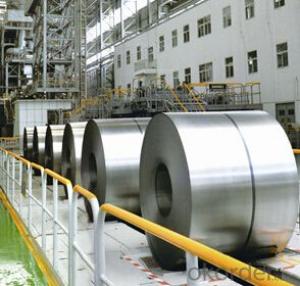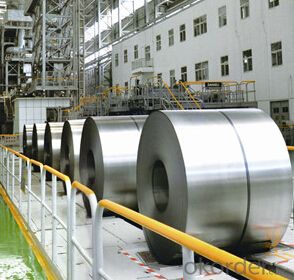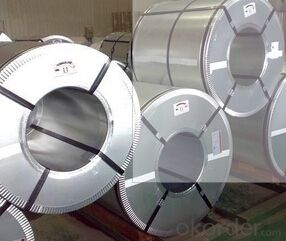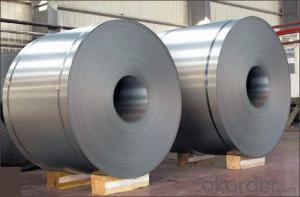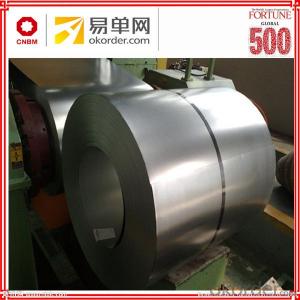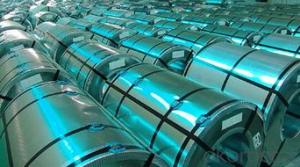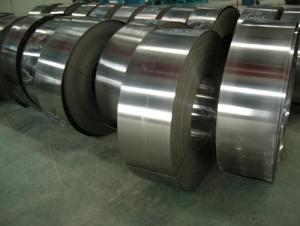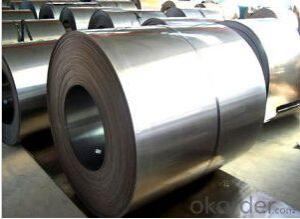Best Price ASTM 304L Cold Rolled Stainless Steel Coil
- Loading Port:
- Tianjin
- Payment Terms:
- TT OR LC
- Min Order Qty:
- 25 m.t.
- Supply Capability:
- 10000 m.t./month
OKorder Service Pledge
OKorder Financial Service
You Might Also Like
description:
Basic Info.
Model NO.:Width:1000,1219,1220,1500mm Thickness:0.2-12mm
Surface Treatment:Polished
Technique:Cold Rolled
Standard:ASTM, JIS, GB, DIN, BS
Steel Grade:304L
Categories:Stainless Steel
Brand Name:Sino East
Width:1m-2.5m
Thickness:0.3mm-100mm
Product Description
Hot Sale Stainless Steel Coil & Best Price ASTM 304L Cold Rolled Stainless Steel Coil
Specification of the 304l stainless steel coil
1) Brand: SINO EAST
2) Thickness: 0.2mm-12mm Width:1000mm 1219mm 1220mm 1250mm
3) Model Number:AISI 316
4) Standards: GB ASTM JIS DIN
5) Packing: standard international export packing or as your request.
6) Mill Test Certificate is supplied withshipment, Third Part Inspection is acceptable.
7) Trade terms: FOB TIANJIN, or CIF import port.
8) Minimum order quantity: 2 ton
9) Certificate: ISO, SGS and third partinspection.
10) Capacity: 10000 ton per month or according to the customers
The 304l stainless steel coil in our company are with high quality and reasonable price
| name | Hot Sale Stainless Steel Coil & Best Price ASTM 304L Cold Rolled Stainless Steel Coil |
| Zinc coating | 60-120g/m2 |
| surface treatment | Galvanized,Chromated,Unoiled/Oiled,Bright Finished,Spangle, |
| width | 1000mm,1219mm,1250mm Or cutting and slitting for your requirement |
| coil weight | 4-10MT, or as per customers' requests |
| Application | General Use,Home electric appliances,Roofing, Outside of the buildings,Structure,ventilation pipe with general shape,etc |
- Q: How are steel coils inspected for uniformity using statistical analysis?
- Steel coils can be inspected for uniformity using statistical analysis through various techniques and procedures. The primary objective is to ensure that the steel coils meet the required specifications and have consistent quality throughout the entire coil. One common method of inspection is to collect a representative sample of steel coils from a batch or production run. These coils are randomly selected to ensure a fair representation of the entire batch. Statistical analysis is then performed on this sample to determine the uniformity of the coils. The first step is to measure various physical properties of the coils, such as thickness, width, weight, and surface defects. These measurements are recorded for each coil in the sample. The collected data is then analyzed using statistical techniques, such as mean, standard deviation, and range calculations. By calculating the mean values of the measured properties, it is possible to determine the average values for thickness, width, weight, etc. These mean values can be compared to the desired specifications to identify any deviations or inconsistencies. The standard deviation provides a measure of the variability or dispersion of the data, indicating how closely the coils conform to the desired specifications. A smaller standard deviation indicates greater uniformity. Additionally, range calculations can be performed to determine the difference between the maximum and minimum values of the measured properties within the sample. A smaller range suggests a higher level of uniformity. Statistical analysis can also involve the use of control charts, such as X-bar and R-charts, to visually monitor the variation in the measured properties over time. These charts provide a graphical representation of the data, allowing for the identification of any trends or out-of-control conditions. Overall, statistical analysis allows for a systematic evaluation of the uniformity of steel coils by providing objective measurements and statistical indicators. By analyzing the collected data, manufacturers can identify any deviations from the desired specifications and take appropriate corrective actions to ensure consistent quality throughout the production process.
- Q: What is a steel coil?
- A steel coil is a long, continuous sheet of steel that has been wound into a coil shape. It is typically made from hot-rolled or cold-rolled steel and is used in various industries for manufacturing purposes, such as in automotive, construction, and appliance sectors.
- Q: Are Danielle steel books good to read. Im 15 , but do I have to wait until Im a bit older.
- No they are a good read.
- Q: Like 49ers. Pittsburgh have long history of steel industry?
- www.okorder A basement waterproofing New Jersey contractor is the one that you need to ensure that your entire home's foundation will not get damped with water and to avoid expensive repairs at the same time.
- Q: How are steel coils used in the production of automotive stampings?
- Steel coils are used in the production of automotive stampings as they provide a continuous and uniform supply of raw material. These coils are fed into stamping machines where they are cut, shaped, and formed into various automotive components such as body panels, chassis parts, and structural reinforcements. The use of steel coils ensures efficient and consistent production, resulting in high-quality automotive stampings that meet industry standards for strength, durability, and precision.
- Q: What types of steel are used in steel coils?
- There are various types of steel used in steel coils, including carbon steel, stainless steel, galvanized steel, and high-strength low-alloy steel.
- Q: How are steel coils processed before being used in manufacturing?
- Before steel coils are used in manufacturing, they undergo a series of processing steps. Initially, the steel coil is uncoiled from a large spool, a process that is typically carried out using a machine known as a decoiler. Once the coil is uncoiled, it is carefully inspected for any defects or damages. Following inspection, the steel coil is subjected to a process called leveling. This involves passing the coil through a set of rollers to eliminate any unevenness or waviness in the steel. By doing so, the leveling process guarantees that the coil has a uniform thickness and a flat surface, which is crucial for subsequent processing. The subsequent step involves thoroughly cleaning the steel coil to eliminate any impurities it may have, such as rust, oil, or dirt. Typically, this is accomplished by running the coil through a cleaning line, where it is treated with chemicals and water sprays. Through this cleaning process, the surface of the coil is thoroughly cleansed of any contaminants that could potentially compromise the quality of the final product. Once the cleaning process is complete, the steel coil may undergo additional processes tailored to the specific requirements of the manufacturing process. For instance, the coil may undergo annealing to enhance its ductility and reduce its hardness. Annealing entails heating the coil to a specific temperature and gradually cooling it. This process serves to alleviate internal stresses and enhance the mechanical properties of the steel. Upon completion of all necessary processing steps, the steel coil is now ready to be utilized in the manufacturing process. It can be further processed into various forms and shapes, such as sheets, plates, or strips, depending on the specific requirements of the manufacturing process. These processed steel coils find application in a wide array of industries, including automotive, construction, appliances, and machinery.
- Q: would you consider steel a flexible substance...i am debating this with my coworkers.Thanks,
- Yes, steel is flexible. Springs, like the ones holding up your car, are made out of steel. One reason why steel skyscrapers do so well in earthquakes is because steel is flexible. Piano wires are made out of steel. High tension wires for electric power transmission are made out of steel. Even a solid block of hard steel can actually bend and spring back, although it's very hard to see this tiny flexure.
- Q: Hey everyone.I have a whetstone and a honing steel. I purposely tried to make one of my knives less sharp twice to see how well the whetstone and honing steel would work.It even seemed that when I was using my whetstone it wasn't as sharp as it was when I used my honing steel, but when I also used my honing steel after having sharpened my knife on the whetstone, it was razor sharp.I was wondering, is the whetstone only supposed to be used when the knife edge isn't as flat anymore or something? Like, only when it doesn't really have an edge anymore?Please explain your answer.Thanks everyone.
- In general, whetstones will actually remove metal in order to sharpen a blade, and the angle they're used at is important too. A steel will just straighten the blade between uses, not actually remove metal. The effect is to make it sharper than it was just before, but only because it's straighter. Using a knife makes the very thin edge kind of flatten or even fold over a bit, or get wavy, etc...so the steel just straightens it back out (imagine what happens when the very thin blade gets pressed down repeatedly on a cutting board, or even cuts through foods repeatedly). (A whetstone is used only when steeling finally just isn't enough to get the blade sharp as needed.) .
- Q: How are steel coils used in the manufacturing of doors and windows?
- Steel coils are used in the manufacturing of doors and windows by being processed into flat sheets or strips, which are then cut, shaped, and formed into various components such as frames, panels, and reinforcements. The steel coils provide strength, durability, and stability to the final products, ensuring high-quality doors and windows that can withstand different weather conditions and provide security to buildings.
Send your message to us
Best Price ASTM 304L Cold Rolled Stainless Steel Coil
- Loading Port:
- Tianjin
- Payment Terms:
- TT OR LC
- Min Order Qty:
- 25 m.t.
- Supply Capability:
- 10000 m.t./month
OKorder Service Pledge
OKorder Financial Service
Similar products
Hot products
Hot Searches
Related keywords
